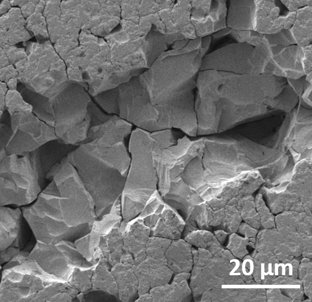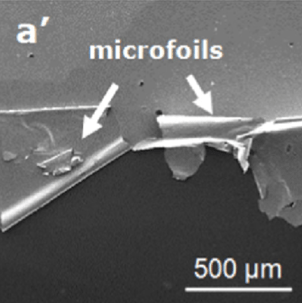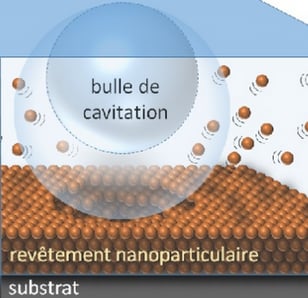Development and applications of the cavitation test
My research on the ultrasonic cavitation test began with its application to evaluate the cohesion of nanoparticle-based coatings. In an initial study, I investigated how the size of silica nanoparticles influenced the mechanical stability of these coatings. Using an ultrasonic cavitation setup, I demonstrated that smaller nanoparticles led to coatings with higher resistance to mechanical stress, providing critical insights into the durability of such coatings in various applications [31].
Building on this approach, I extended the use of the cavitation test to assess the adhesion of thin metallic films. In particular, I examined submicrometer-thick metallic coatings, evaluating their resistance to cavitation-induced stresses. This study provided a novel way to characterize thin films that are otherwise difficult to assess using traditional adhesion tests [30, D1].
More recently, I have explored the role of elasticity in the resistance of polymeric coatings against ultrasonic cavitation damage. This research is particularly relevant for protective coatings exposed to extreme mechanical conditions, such as coatings in pipes, marine environments, and surfaces subjected to high-velocity impacts from sand or raindrops, like wind turbine blades [submitted to Wear].





